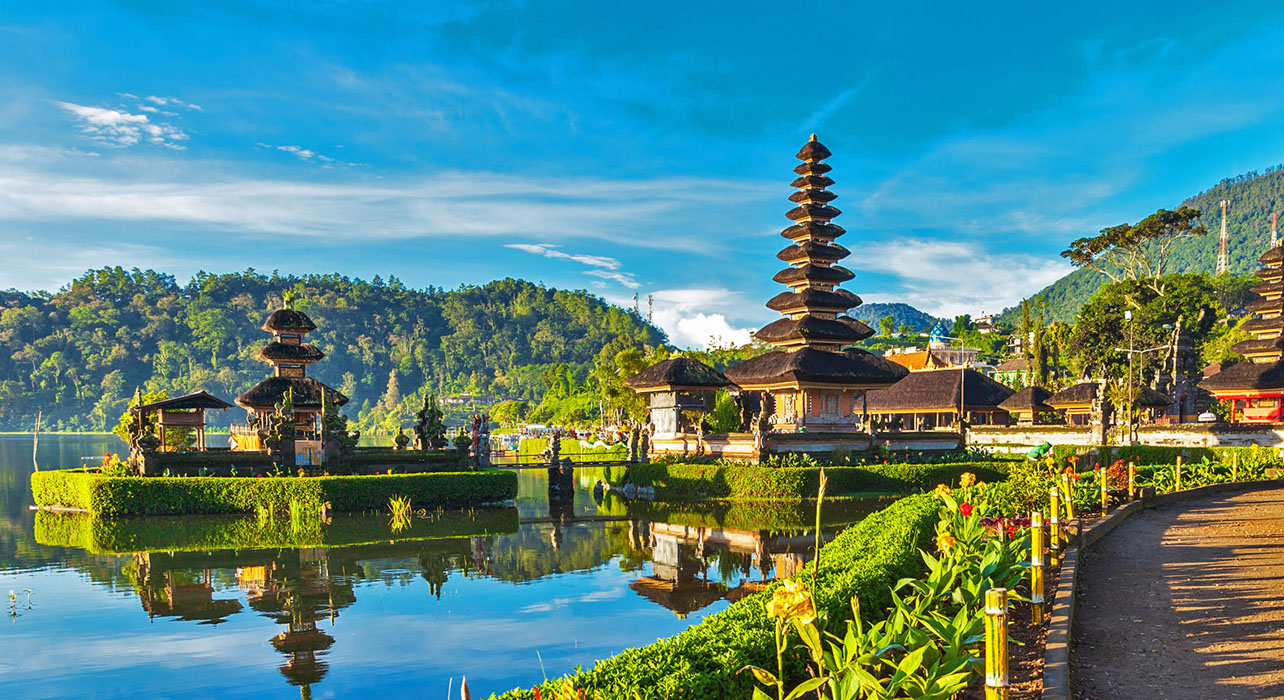Ten More Balis for Indonesia : Part-2 Actions which Support Tourism

In Part-1 we looked at some examples of policies and attitudes which fail to support tourism. We could call knowhow and commitment to hospitality, the “software” of successful tourist policies.
Successful tourism also needs basic “hardware” support . That is, the infrastructure of electricity & water, telecommunications, airports, roads, jetties, railways, cable cars, garbage and sewage disposal.
However, when infrastructure is lacking, we can always start by aiming at easy to sell markets, such as physically strong young backpacker budget travellers, willing to put up with a degree of hardship to travel off the beaten path.
Gili Trawangan near Lombok is a classic destination built by the private sector for backpackers. Before the government had time to build jetties, small entrepreneurs had already started operating ferries capable of dropping guests directly onto the beach. The kind of guests who visit the Gili Islands don’t mind getting their feet wet.
If we aim small, Indonesia’s Ten Next Balis are ready to promote now.
The second big advantage of encouraging low budget tourists is that the logic of the marketplace develops resorts that people want. Small resorts built by market forces have the potential to grow into giants. That’s how Kuta-Legian, Pattaya and Gili Trawangan got started.
Integrated reports built by billionaire capitalists tend to stall and grow slowly. Indonesia has two examples of this: Nusa Dua in Bali, which opened in the 80s and Bintan Resorts near Singapore, in business since the 90s. Both projects cleared out the local people and spent several years building huge integrated resorts from the ground up. Both places are boring. Big resorts offer little of the fun interaction between foreign guests and local small entrepreneurs. Instead we see the relationship of the monied master telling his salaried servant what he wants. There is little room in the integrated resort model for the organic growth of small entrepreneurs.
If we aim small, Indonesia’s Ten Next Balis are ready to promote now.
In the South China Sea, the scenically outstanding Anambas Islands are not even on the list of ten Balis. But the Anambas has two empty airports, Matak and Letung, that have been waiting for an airline to start flying guests in. Few people are aware that, thanks to the newly opened $2,000/day Bawah Island Resort, Anambas is ready to compete for the prestigious label of “World’s Best Beach Destination”. Worldwide awareness of this outstanding archipelago is about to take off. Both airports are only a one hour flight from Singapore.
Another outstanding natural attraction that had to be left off the “Ten next Balis” list, is the Bromo Tengger Semeru National Park. After our visit there in June we know why. The only town with access to the Bromo caldera, Cemoro Lawang, is dirty and overcrowded with pushy touts and over priced entry charges. A few aging hotels overlooking the crater have a monopoly on expensive bad food and poor service. Indonesia could improve it’s tourism reputation by bulldozing the entire town to the ground and rebuilding it under new criteria Maybe the Bromo national park needs a cable car to a new location on the caldera rim, that eliminates the need for roads? Different ways to access Bromo needs fresh ideas. There are millions of people who would visit Bromo; the existing setup is a disorganized overcrowded mess that gives Indonesia a bad name..
INFORMATION FOR TRAVELLERS
Indonesia’s hundreds of tourism promotion officers could put their university degrees to good use by individually submitting useful information to Indonesia’s many content hungry destination websites. If every tourist department officer could submit 100 words and one photo per week to a relevant destination website, Indonesia’s travel information gap could be filled within a year. Would be travelers are looking for honest reviews containing up to date basic information e.g. how to take a bus from A to B, or reviews of restaurant/food outlets.
In other words, a lack of useful information for travelers makes it hard for those who are now considering visiting the ten alternative Balis, or anywhere else for the matter. Poor information is a simple problem that can be solved by tourism officers already on the payroll. An entire national industry shouldn’t rely only on Trip Advisor.
THE ATTITUDE OF GOVERNMENT OFFICIALS
Indonesians are naturally friendly and hospitable people, which makes it hard to understand why some officials in the post Suharto era became so rude and inconsiderate of foreign guests. The good news is that this phase of treating guests rudely is now disappearing. It looks like the immigration queue touts inside Denpasar airport have finally disappeared. (Though the taxi stand outside is still chaotic.) In our recent travels, we notice improvements in the service attitudes of police and railway officials. Younger immigration officials seem to be polite too.
There still seems to be little interest in coordinating the needs of tourism with other departments, such as marine operations. In Thailand, where tourism has more clout to help set national economic priorities, we don’t see foreign owners of small tourist services being harassed by petty immigration rules, the way we see in Indonesia. For example Thai tourism policies understand that certain cultural wants of, say, Russian tourists are best met by ethnic Russian providers. Supporting local businesses, regardless of who owns them, should be official government policy.
CONCLUSION
If we want today’s tourists to return again, we need to talk to them face to face over a few drinks after dinner to find out what they experiences they had today; e.g. what went wrong and what went well. Government tourism officials should “descend to the field”, and adopt the habits of successful private sector tourist providers who talk to their customers daily, to find out what’s going wrong, so that things that need fixing are dealt with before they happen again tomorrow.



